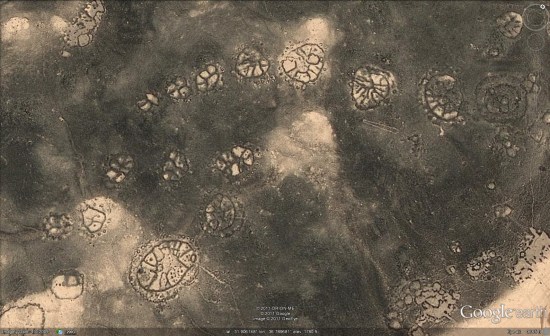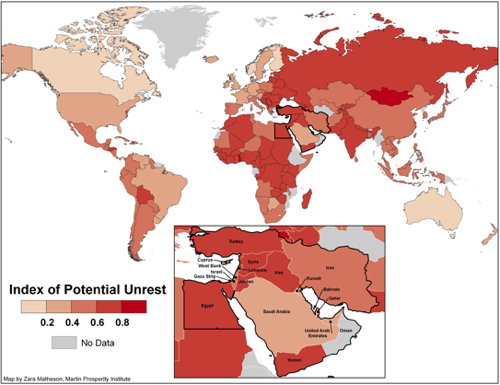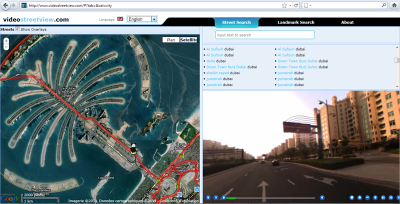First discovered in 1927 by British Royal Air Force fliers, the strange wheel-shaped structures in the middle east are gaining new attention thanks to Google Earth. Researchers have discovered thousands of them in Peru, Jordan, and other nearby countries.

Some believe that the structures were used to contain animals, but there is no consensus about that. According to an article on CBSNews.com:
In Saudi Arabia, (David) Kennedy’s team has found wheel styles that are quite different: Some are rectangular and are not wheels at all; others are circular but contain two spokes forming a bar often aligned in the same direction that the sun rises and sets in the Middle East.
The ones in Jordan and Syria, on the other hand, have numerous spokes and do not seem to be aligned with any astronomical phenomena. “On looking at large numbers of these, over a number of years, I wasn’t struck by any pattern in the way in which the spokes were laid out,” Kennedy said.
The function of the wheels may also have been similar to the enigmatic drawings in the Nazca desert.
“If we consider, more generally, the stone circles as worship places of ancestors, or places for rituals connected with astronomical events or with seasons, they could have the same function of [the] geoglyphs of South America, the Nazca Lines for instance. The design is different, but the function could be the same,” she wrote in her email.
Kennedy said that for now the meaning of the wheels remains a mystery. “The question is what was the purpose?”
Beyond that, what do you think the purpose of these wheels was for? Practical, religious, astronomical, or something altogether different?

